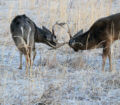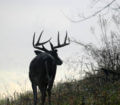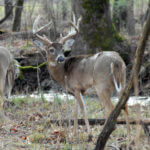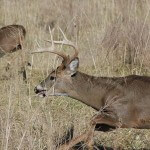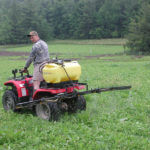John’s Note: To be a more-consistent hunter, you must know everything you can about the animals you hunt, and the other people who are trying to take those same deer. However, during the short span of time that deer season encompasses when the hunter can gather this information, his interest generally is distracted by his desire to take a buck. To gain this knowledge, the very best time of the year to scout is immediately after the season is over. The only disadvantage you’ll have is you won’t be able to harvest the animal after you’ve gained the knowledge required to find him. But what you’ve learned in the post-season will become extremely valuable in all the seasons to come. In my opinion, the single-most-important ingredient to a deer hunter’s continued success is this wealth of knowledge he amasses about the sport in which he participates. One of the best ways to gain that knowledge is by scouting after the season for deer.
 Deer nutrition has been a hot topic of discussion over the last couple of years. What’s the best food to plant for deer? How many food plots should be planted per thousand acres? How do you insure deer utilization of the food you plant? What’s the health condition of the animals left on the property after hunting season?
Deer nutrition has been a hot topic of discussion over the last couple of years. What’s the best food to plant for deer? How many food plots should be planted per thousand acres? How do you insure deer utilization of the food you plant? What’s the health condition of the animals left on the property after hunting season?
One of the primary indicators which dictates whether or not supplemental feeding is beneficial to deer management is the amount of browse left during the winter after hunting season. For the untrained eye, detecting a browse line may be difficult in areas where there’s not a severe food shortage. However, if there’s been a hard winter and very little food available, there will be a very definite and distinct lack of foliage about waist-high to the hunter throughout the woods.
After the season, you can contact your state wildlife biologist and ask him to accompany you on a deer survey to determine the nutrition level and needs of the deer herd on the property where you hunt. During the season, a wildlife biologist’s work load increases. But once deer season ends, his work load may be reduced, which means this may be a good time for the hunter to spend hours with the biologist.
From the biologist, you can learn to identify the food sources the deer are utilizing after the season. You can watch how he evaluates the herd and makes his predictions for the upcoming year. Wildlife biologists usually are more than happy when working with hunters to teach them how to hunt deer as well as share their knowledge of the deer’s habits, behavior and feeding and moving patterns and help sportsmen identify the food sources deer are utilizing at the end of deer season. Then you’ll understand which food sources to target for stand sites during the upcoming season and know whether or not supplemental feedings are needed to improve the nutrition of the deer on your property.
 You’ll learn more deer-hunting information and tips from hunters in John E. Phillips’ Kindle, CreateSpace and Audible books by going to https://johninthewild.com/books/#deer to purchase and download to your Kindle, and/or download a Kindle app for your iPad, SmartPhone or computer. You also can go to Nook Books at www.barnesandnoble.com to buy. Too, you can download free books by going to https://johninthewild.com/free-books.
You’ll learn more deer-hunting information and tips from hunters in John E. Phillips’ Kindle, CreateSpace and Audible books by going to https://johninthewild.com/books/#deer to purchase and download to your Kindle, and/or download a Kindle app for your iPad, SmartPhone or computer. You also can go to Nook Books at www.barnesandnoble.com to buy. Too, you can download free books by going to https://johninthewild.com/free-books.

